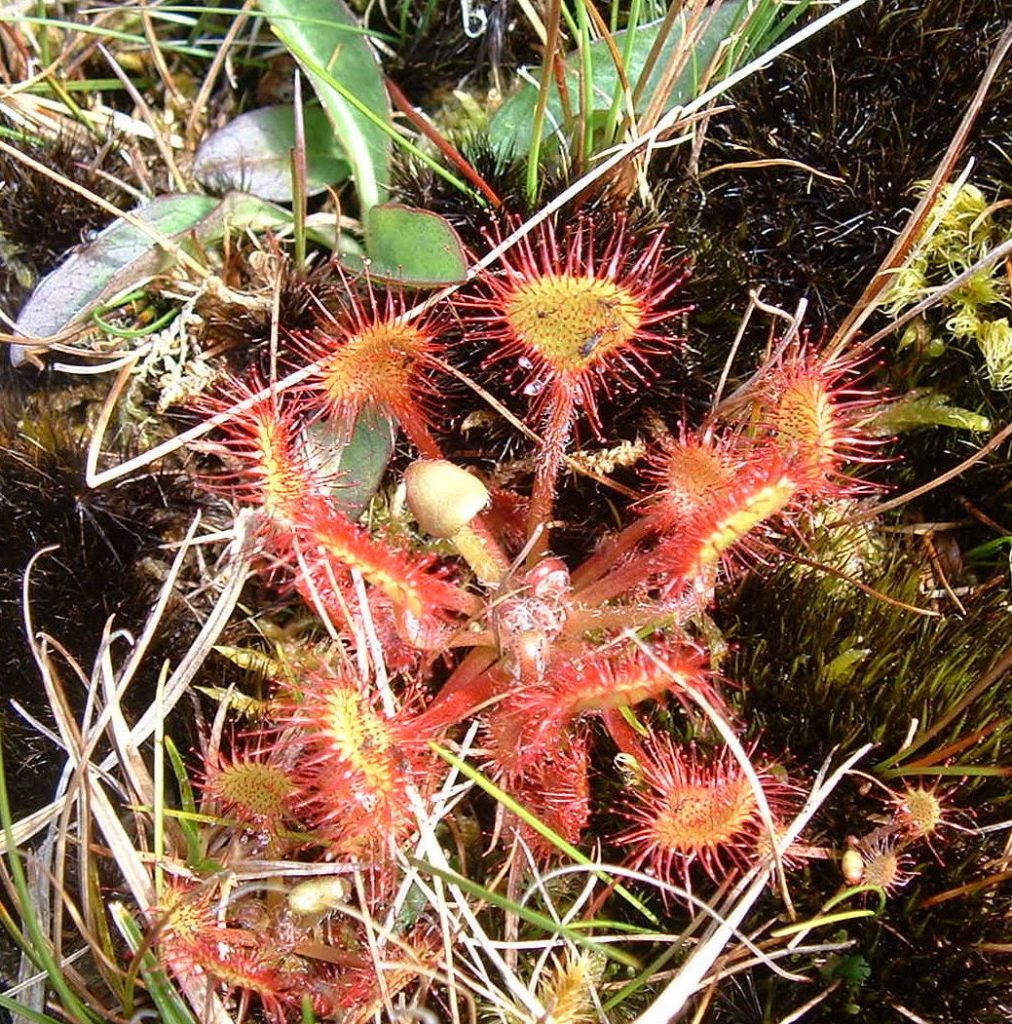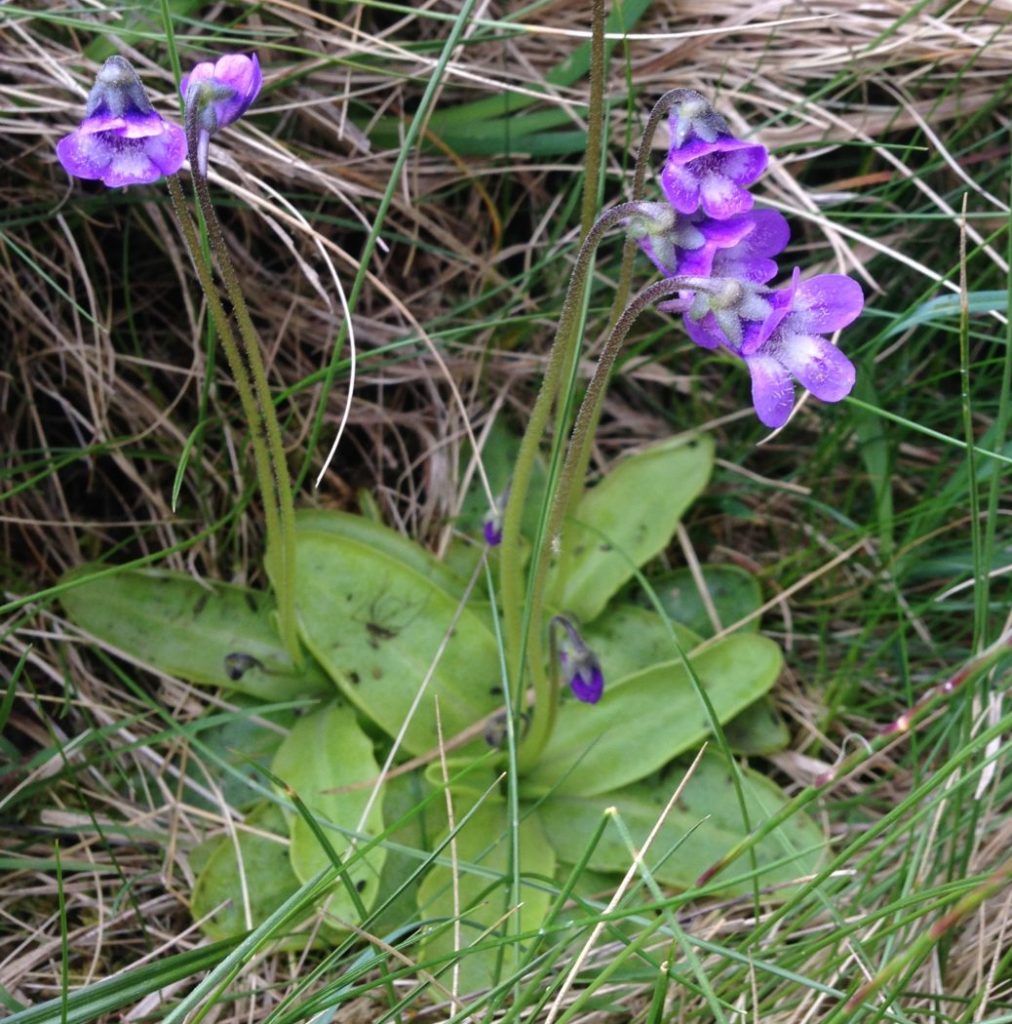Cwm Idwal is an area where the annual rainfall is compartively high.
When water flows constantly through the soil, it washes the minerals, e.g. Nitrogen, from the acidic soil. Marshy soils are also more acidic, and this limits the number of species that can live here.
There are two particular plants in Cwm Idwal that have adapted for survival under such circumstances, which are Butterwort (Pinguicula vulgaris), and the round-leaved or common sundew (Drosera rotundifolia).
These plants are different from other plants in Cwm Idwal as they trap and digest small insects. The plants have adapted to do this in order to acquire the necessary minerals for growth, flowering and seeding.
In order to measure the succession rate , Natural Resources Wales monitors the composition of the ve.g.etation every five years.
Other institutions also do occasional investigations, with organisations such as the BTO (British Trust of Ornothology), and the RSPB (Royal Society for the Protection of Birds) organising surveys, and universities use the reserve for teaching ecological and geographical techniques and countryside management to students.

